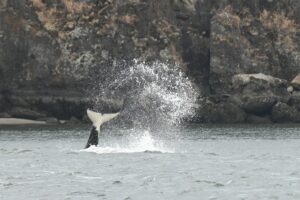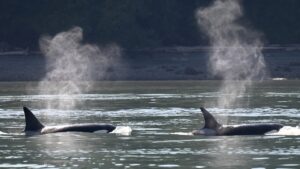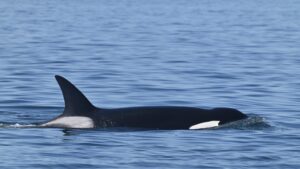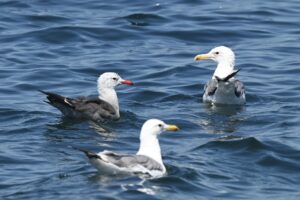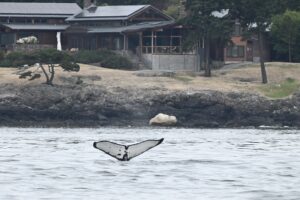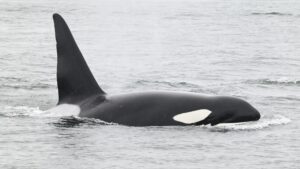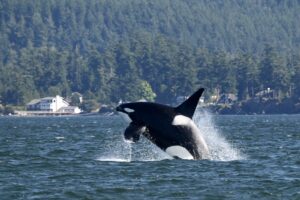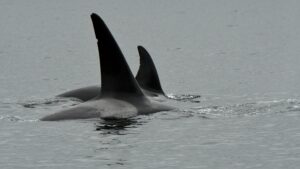This past week was a classic Pacific Northwest summer week: often sunny and beautiful with a couple 80+ degree weather days, but of course also a day or two with a little sprinkling in of some fog and light drizzle. Different weather patterns offer different lighting and water conditions to view the whales in, which keep every tour unique and interesting!
The Bigg’s killer whales we saw on our tours this week consisted of the T36As, T36A1s (back in with the T36As for a couple encounters), T37A1s (traveling primarily with the T36As until the T36A1s showed back up), the T37As (minus T37A3, likely still off doing his own exploring), the T46Bs, T65As (minus A5), T65Bs, T75Bs, T123s, and the T137s. This totals 37 different individuals encountered! The T65A family group and the T137s were in range to see them on multiple tours this past week, and as always, we love the delighted “oohs and ahhs” that the big males get from our guests (T137A “Jack,” T65A2 “Ooxjaa,” and T65A3 “Amir”, who, *I feel* is starting to give his older brother a run for his money on who is the more impressive male.).
When our tours took us out near Salmon Bank, we scanned for, and were rewarded with several minke whales. 2-3 of them continue to feed on forage fish right along the southern shelf of the bank, but they can be quite quick and “slinky” at times. Guests are usually up to the task of trying to spot them as they quickly surface, and this make it fun for all involved.
We also saw a couple humpback whales this week, including a young whale that is “new to science.” What “new to science” means is that this individual had not yet been documented prior to being sighted off the San Juan Islands. Eventually, this whale will receive an official designation from researchers. Their beautiful, bright white fluke with some dark, circular markings sure set this individual apart, so we look forward to seeing this whale again in the future and how their story unfolds. We are also looking forward to seeing what nickname they may come up for this Salish Sea “newbie.” Some of the other humpbacks that we saw we were unable to identify, and this could be for a number of reasons. The first: they did not “fluke” while we were with them (raise that tail up so we could get a photo of the underside). If they did fluke, we may have been in the wrong position (doh!) to catch it. Water or weather conditions just may not have been favorable. Regardless, even the “unknowns” are a delight to spend time with, and I thoroughly enjoy sharing the Salish Sea “humpback comeback” story with everyone that comes aboard.
As always, we look forward to seeing what this next week will bring us!
